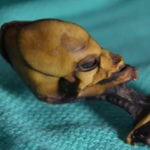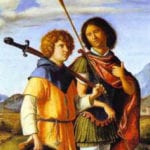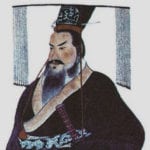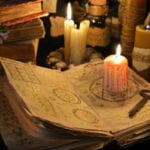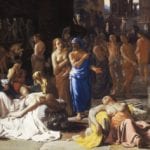 Weird Stuff
Weird Stuff  Weird Stuff
Weird Stuff  Animals
Animals 10 Inspiring Tales of Horses Being Human
 Mysteries
Mysteries Top 10 Haunting Facts About the Ghost Ship MV Alta
 History
History 10 Surprising Stories About the Texas Rangers
 Humans
Humans 10 Philosophers Who Were Driven Mad by Their Own Theories
 Miscellaneous
Miscellaneous 10 Video-Game-Worthy Weapons and Armors from History
 Weird Stuff
Weird Stuff 10 Psychics Who Accurately Predicted Wartime Events
 The Arts
The Arts 10 Pieces of Art Inspired by a Broken Heart
 Health
Health 10 Science Fiction-Sounding New Medical Treatments
 History
History 10 Surprising Facts About the Father of Submarine Warfare
 Weird Stuff
Weird Stuff 10 Times Real Laws Were Based on Bizarre Hypotheticals
 Animals
Animals 10 Inspiring Tales of Horses Being Human
 Mysteries
Mysteries Top 10 Haunting Facts About the Ghost Ship MV Alta
Who's Behind Listverse?

Jamie Frater
Head Editor
Jamie founded Listverse due to an insatiable desire to share fascinating, obscure, and bizarre facts. He has been a guest speaker on numerous national radio and television stations and is a five time published author.
More About Us History
History 10 Surprising Stories About the Texas Rangers
 Humans
Humans 10 Philosophers Who Were Driven Mad by Their Own Theories
 Miscellaneous
Miscellaneous 10 Video-Game-Worthy Weapons and Armors from History
 Weird Stuff
Weird Stuff 10 Psychics Who Accurately Predicted Wartime Events
 The Arts
The Arts 10 Pieces of Art Inspired by a Broken Heart
 Health
Health 10 Science Fiction-Sounding New Medical Treatments
 History
History 10 Surprising Facts About the Father of Submarine Warfare
10 Of History’s Most Fascinating Sorcerers
Throughout history, men have claimed to wield the supernatural, laying blessings and curses for anyone willing to pay. Swaying powers unseen unto one’s bidding is a tempting prospect. The world will always have its wizards.
10Abe no Seimei

Abe no Seimei was the Japanese Merlin. However, unlike the European wizard, Seimei’s historical existence goes unchallenged. He served six different emperors as an omyodo, a yin-yang master. The court wizard oversaw matters of divination, protecting the Japanese emperor with rituals to banish evil spirits and illnesses. Legends and folktales ascribe to him all sorts of supernatural powers.
The famous kabuki play Kuzunoha says he inherited his magical power from his mother, a white fox. He was said to possess second sight, which he used to identify demons. When the samurai Watanabe no Tsuna was said to cut off a demon’s arm, he brought the accursed item to Seimei to seal it away with a spell. The demon later tried to retrieve its limb but was unable to overcome Seimei’s magic. Legend says that Seimei met hosts of other demons in magical combat, defeating each of them with his vast repertoire of spells.
Legend also says that he was killed by a rival. In another play, rival Ashiya Doman secretly copies a text Seimei had been studying under a Chinese master wizard. With his stolen knowledge in hand, Doman challenges Seimei to a wizard battle and manages to kill him. Later, though, Seimei’s Chinese master arrives in Japan and resurrects his pupil with a ritual, allowing the reborn Seimei to defeat the rival wizard and reclaim his book.
9The Sorcerer Of Trois-Freres

The Sorcerer of Trois-Freres, France is one of the earliest depictions of sorcery in human history. The figure presides over a series of Paleolithic cave paintings. It sits above the other cave paintings in an area only accessible by ascending a spiral corridor.
He is a mix of man and animal, with human limbs, a pronounced penis, and an animal body with antlers. Though scholarly debate surrounds his identity, the Sorcerer is believed to be either a shaman or a god who held sway over the people inhabiting his area.
Perhaps even more interesting than the Sorcerer himself are those who painted him. The cave is theorized to be a place of gathering, where rituals were performed to ensure a large bounty during hunts. The Sorcerer, if he was indeed a god, would have been a god of sorcery presiding over a coven of prehistoric wizards. If the Sorcerer represented an actual man, however, he could be likened to a prehistoric Merlin.
8The Black Constable

Charleston, South Carolina has a long history of voodoo, and its deadliest voodoo sorcerer was named John Domingo. He was a peculiar-looking man—strong, unkempt, and often clad in an old Union Army coat. He wore a silver ring in the shape of a serpent that he claimed could raise the dead. This supposed necromancer used his undead to enforce his own brand of law, earning him the nickname “Black Constable.”
It was said that sailors would buy wind from him to ensure a safe journey. He could also send storms their way if he felt offended. At the height of his power, it was said that the city’s citizens would seek him out to solve their legal troubles even before they went to the police. Despite his unrivaled clout, legend says that he met a sudden and mysterious end.
He had just apprehended two suspected robbers. Dragging them through the street, one in each hand, he compared himself to Jesus with a thief on either side. Except, thought Domingo, he himself was more powerful. According to the story, he then felt invisible fingers draw him up on his toes, choking the life out of him.
He was thrown backward to the ground, aged and withered like an old cucumber. His dead body continued to wither away into nothing. Legends say his ghost can still be seen walking the streets.
7Rabbi Judah Loew ben Bezalel
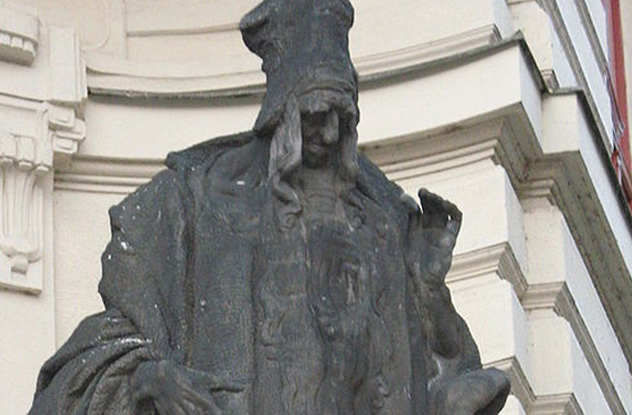
Rabbi Judah Loew ben Bezalel was a scholar and mystic known as the Maharal of Prague. The respected figure, according to legend, was often sought out by the Holy Roman Emperor for both religious and secular knowledge. Though his relationship with the emperor was perhaps not as close as legends say, the two were on good terms. Emperor Rudolph II owned a bell the rabbi had created through cabalistic methods.
Rabbi Loew was known for his large contributions to Jewish philosophy, but legend says that he also used his knowledge of the Kabbalah to create a golem.
It was said that the Jewish community of Prague was being accused of blood libel—kidnapping Christian children and using their blood in religious rituals. According to stories, of which there are several versions, Rabbi Loew created a golem named Josef to protect his community from the persecution. Josef would patrol the street, making itself invisible and even conjuring up the dead to protect Prague’s Jewish community.
It was said that the golem eventually malfunctioned and went on a murderous rampage through the streets. The rabbi put it down by changing the character written on its forehead. The character that had given it life was “emet,” the Hebrew word for “truth.” Rabbi Loew changed it to “met,” meaning “death.”
The golem was laid to rest in the attic of the Old-New Synagogue, where it is said to remain to this day.
6St. Cyprian

Legend says that St. Cyprian was a magician of Antioch in league with the devil. At the request of an amorous young man, he conjured a demon to arouse the maiden Justina so that the youth could seduce her. Justina recognized the attack on her sanctity and defeated the demon by making the sign of the cross.
His magic thwarted, Cyprian summoned the devil himself to tempt the maiden, but he was defeated in same manner. Disgusted that Satan could be beaten by a mere maiden, Cyprian cast off his sorcery and converted to Christianity. In time, he became the bishop of Antioch and was martyred for his faith.
The pair of Cyprian and Justina were declared saints and received their own feast day in the Catholic calendar. Historical records show no bishop of Antioch named Cyprian, however, and modern religious scholars now believe their existence to be suspect.
In 1969, their feast day was dropped from the Roman Catholic Church’s calendar. Some traditionalists, including a monastery devoted to the pair, still celebrate them.
5The Magician Of Marblehead
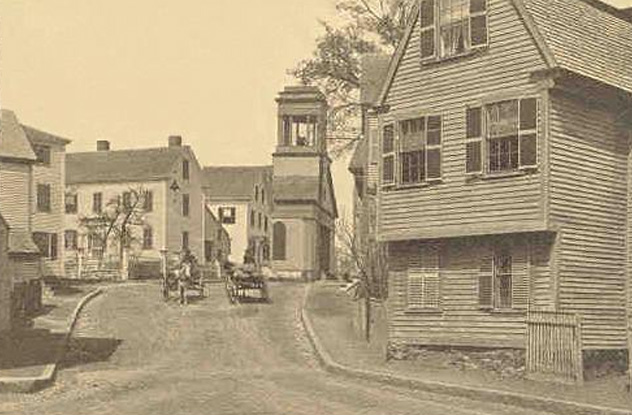
A resident of Little Harbor, Marblehead in Massachusetts, Edward “John” Dimond was feared as an alternately benevolent and malevolent sorcerer. He was born sometime around the Salem witch trials, and his eccentric behavior was likely tolerated due to the stigma against witchcraft accusations following the hysteria.
Dimond was said to go into trances. His eyes would roll back in his head, and he would later come around feeling refreshed and with knowledge of future and distant events. The townsfolk and even local police sought him out to locate stolen items on occasion, a practice at which he apparently had great success. It’s theorized, though, that he could have just as easily located the items through deductive reasoning.
Darker legends say that he was a necromancer who dug up graves for his diabolical arts. According to stories, Dimond would go to the local cemetery during storms and cry into the wind, hailing distant ships at sea. When in a benevolent mood, his voice could be heard by captains thundering above storms, telling them the right course. Other times, when a captain ran afoul of Dimond, he would curse them and send storms to capsize their ships.
4John Of Nottingham

In 1324, the citizens of Coventry, England were suffering under the oppressive rule of the local prior and two chamberlains of King Edward II, a father and son both named Hugh Despenser. In revenge, the citizens hired a local wizard to kill the prior, his accomplices, and the king they served.
According to the story, the magician John of Nottingham and his assistant, Robert Marshall, brought wax and canvas to a ruined house. There, they made images of the men they were to kill, including an extra one of a man named Richard de Lowe to test the spell’s power. They wove spells for seven days and finally drove a leaden branch into the forehead of the image representing Lowe.
The next morning, it was said that Lowe was found screaming and with total amnesia. He remained in the condition until the wizard removed the branch. Nottingham then inserted it into the image’s heart. Lowe soon died.
The deed was brought to the attention of local officials by Marshall, who was upset with the fee his master paid him. John of Nottingham was taken to trial on suspicion of witchcraft. After several adjournments, however, they found Marshall’s tale without enough credibility for a conviction, and John was released.
3Michael Scot
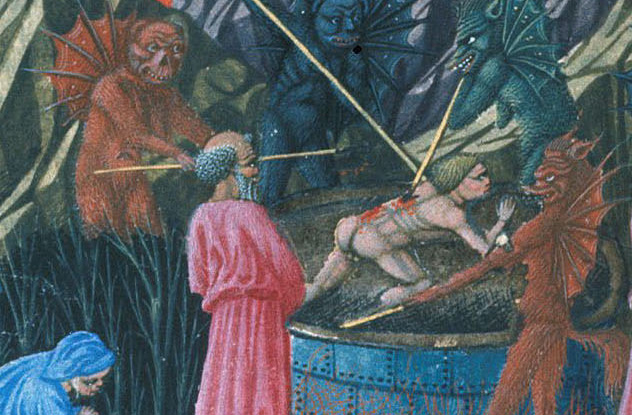
Michael Scot was one of the most influential European intellectuals of the 13th century. Unfortunately for him, history remembers him as not a scholar but a sorcerer.
Scot had a fascination with the occult and treated it with just as much enthusiasm as more orthodox subjects. He studied in Toledo, a Spanish city then under occupation by the Moors, translating many texts into Latin. In Scot’s time, any European with Middle Eastern learning would have been respected and even feared. But Scot also took to dressing in an Arab gown, fueling the belief that he was indeed a sorcerer.
His occult knowledge won him the post of personal astrologer to the Holy Roman Emperor. He was also tutor to the pope, though he likely confined these lessons to more traditional subjects.
During his tenure as the emperor’s astrologist, he gained fame for successfully predicting the result of a war with the Lombard League. He also used his medical knowledge to cure the emperor of ailments. After his death, other feats were ascribed to him, such as changing the course of the river Tweed, drawing rope from sand, and even cleaving the Eildon Hills of Scotland into three separate cones. His reputation earned him a cameo in Dante’s Inferno, where he is punished eternally in the level of hell reserved for wizards.
2Roger Bolingbroke
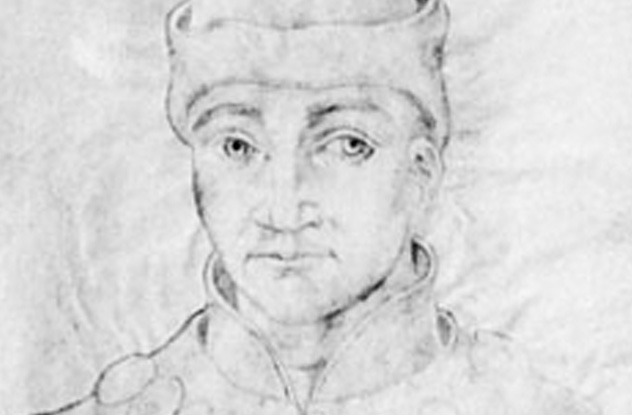
Bolingbroke was a 15th-century priest connected to the Duke of Gloucester. He was accused of being involved in a plot to kill the king with black magic.
He had an interest in astronomy and was said to have used the art to divine whether the Duke’s wife would become the Queen of England. The king himself, Henry VI, was heirless. Had he died, the throne would have fallen to the Duke, making the Duchess queen.
Under torture, Bolingbroke confessed to plotting to kill the king with sympathetic magic using a wax image. He implicated the Duchess as an accomplice. She fled so as not to be tried by a religious court—probably saving her life—but was nevertheless found guilty by a secular court and sentenced to life in confinement. A witch implicated in the plot, Margery Jourdemayne, was burned at the stake. Bolingbroke was hanged, drawn, and quartered.
Historians now think that, like many men of learning, Bolingbroke probably did dabble in astrology. The plot to kill Henry VI, however, was likely conjured up by the Duke’s political enemies.
The Beaufort family, opponents of the popular Duke, feared that he would ascend to the throne in the event of Henry VI’s early demise. The Duke himself toyed with astrology, but it would have impossible to nail a black magic plot on him due to his immense popularity as a war hero. The Duchess, though, was rather unpopular. Her family’s connections to Bolingbroke further made her an easy target. The plot was ultimately successful, disgracing the Duke enough that his ascension to the throne was impossible.
1Edward Kelly

Edward Kelly was the personal scryer of John Dee, a famed 16th-century British occultist. He joined Dee’s service soon after his former scryer, Barnabas Saul, removed himself from the post. Kelly used an obsidian mirror that he said received messages from angels. Dee thought Kelly’s scrying revealed fantastic supernatural knowledge, including the ancient language used by God and the angels, which is today known as “Enochian.”
Dee and Kelly’s relationship was long but troubled. “Kelly” was apparently only one of his names. He is believed to have studied at Oxford under the name Edward “Talbot” and later had his ears cropped as punishment for forgery.
Dee’s wife had a keen dislike for him. Her feelings are understandable, since at one point, Kelly’s angelic messages told Dee and Kelly to share all things, including wives. Though records are unclear, it’s believed the pact could have actually been consummated, though Dee and Kelly’s relationship dissolved shortly after.
After parting from Dee, Kelly assumed the patronage of Holy Roman Emperor Rudolph II’s court. During that time, he penned several alchemical texts. His alchemy met with little success, however, earning him little more than a term in prison when he failed to reveal his supposed secrets to his patron.
Nathan keeps a Japan blog where he writes about the sights, expat life, and finds Japanese culture in everyday items. You can also find him on Facebook and Twitter.
